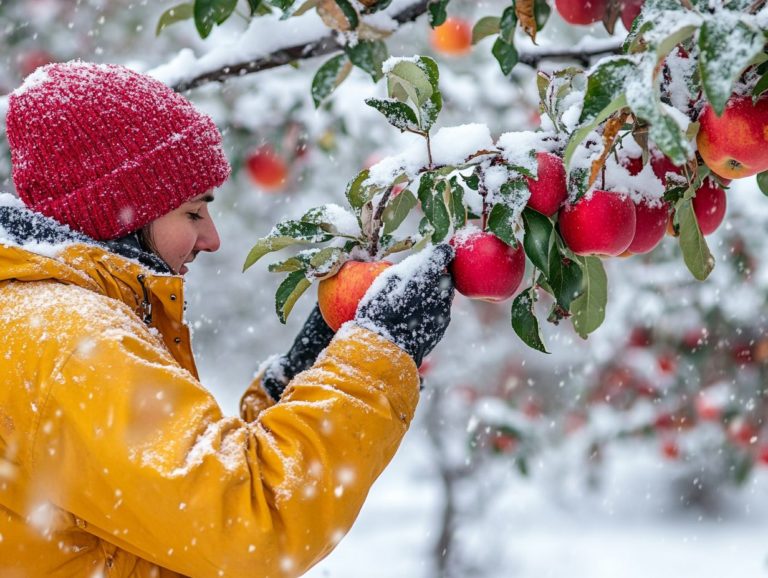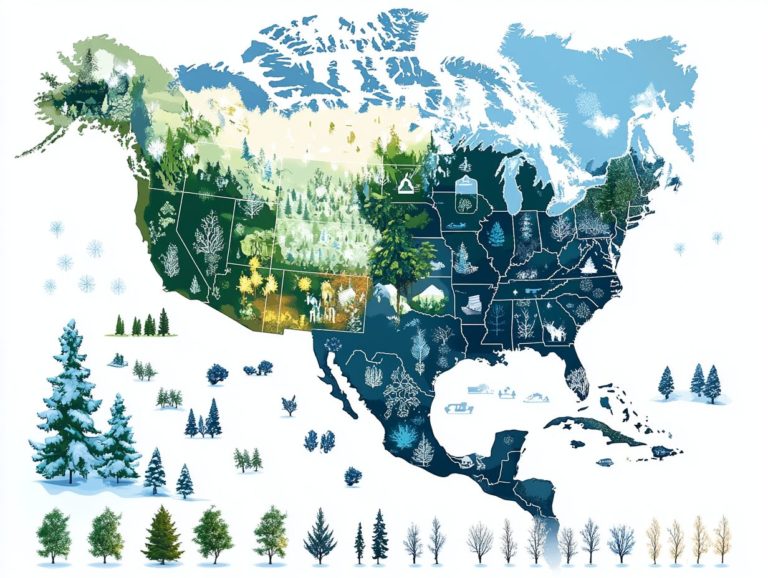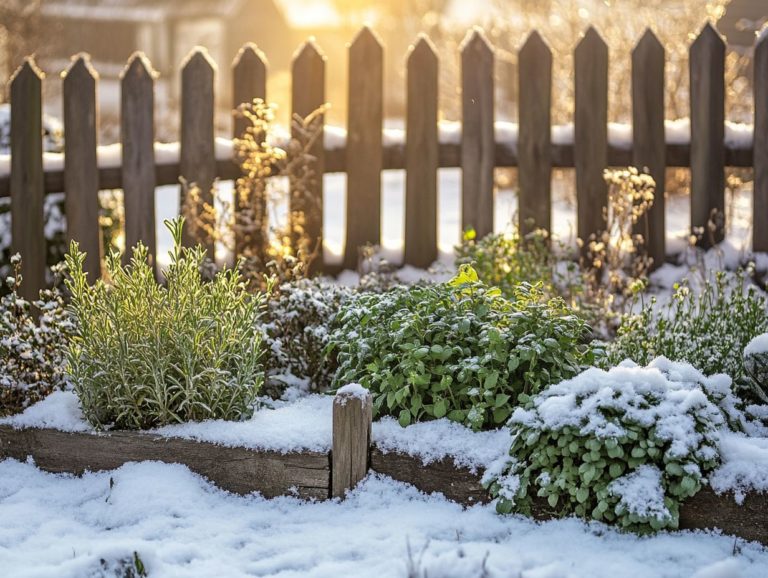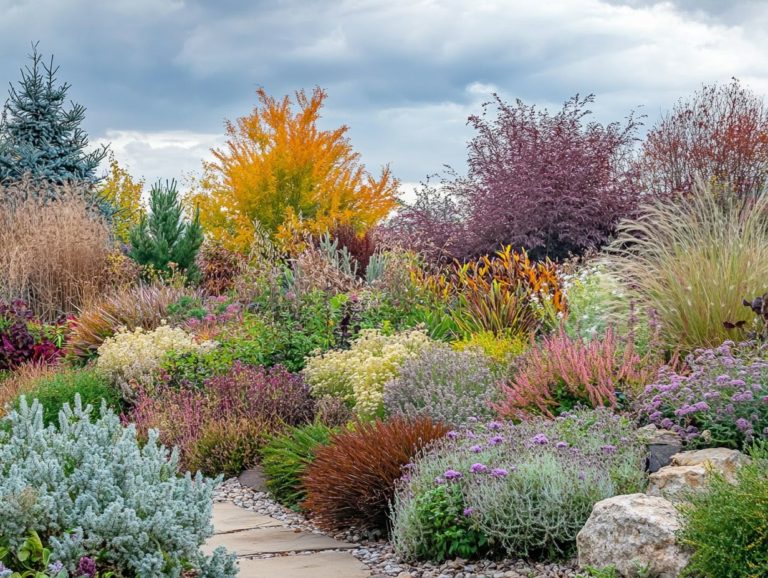Understanding the Growth Habits of Cold Plants
Cold plants thrive in cooler climates, making them perfect for winter gardening in temperate zones.
This article explores the unique growth habits of these resilient plants and the specific climate and soil conditions they need to flourish.
You ll discover various common cold plants, their characteristics, and effective strategies for nurturing them during winter.
As you face challenges like frost, cloches, and row covers, you ll gain valuable insights to help your cold plants not just survive but thrive.
Unlock the secrets of successful cold plant cultivation and learn how to harvest fresh produce even in winter!
Contents
Key Takeaways:
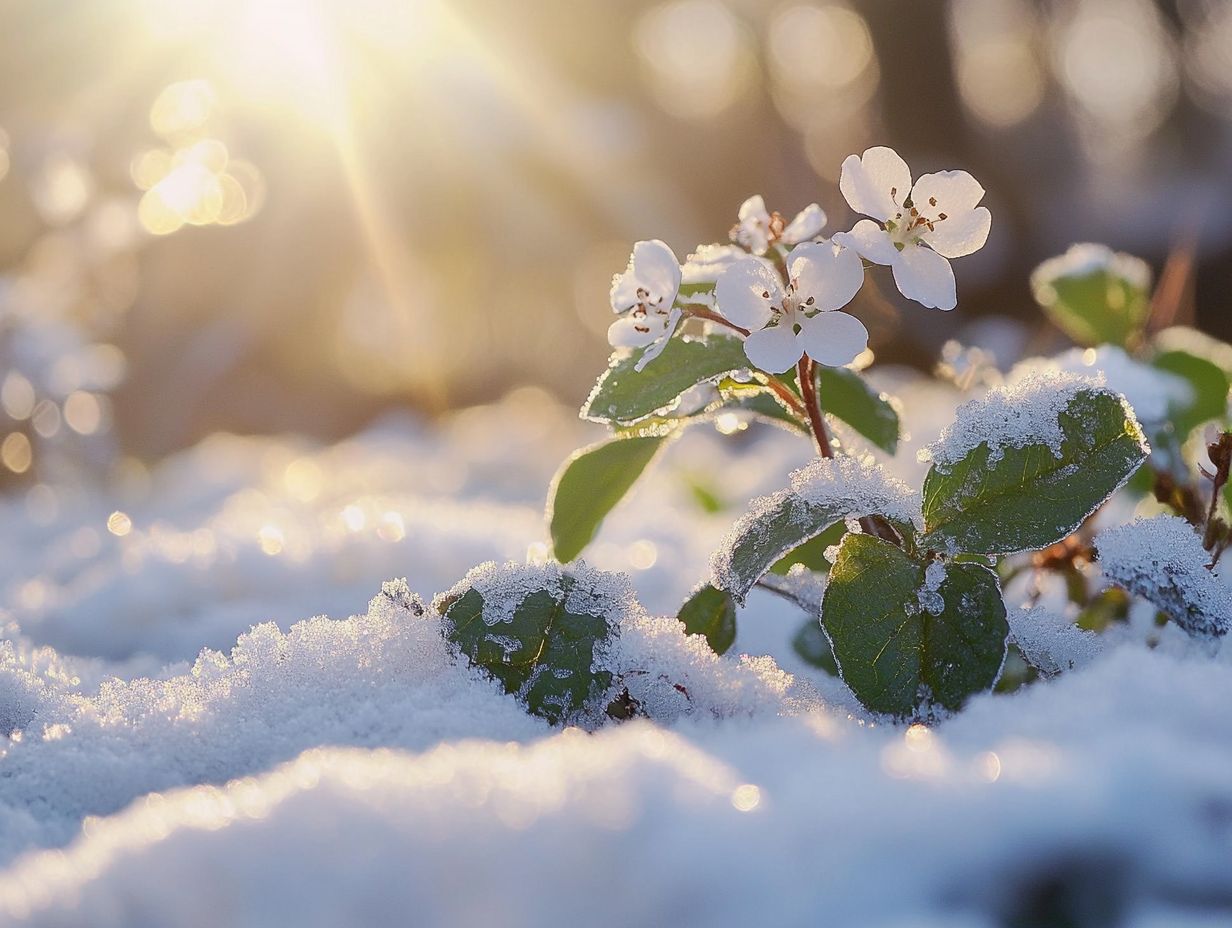
- Cold plants require specific climate, temperature, soil, and nutrient needs for optimal growth in different growing areas.
- Knowing the characteristics of common cold plants helps gardeners choose the right vegetables and perennials.
- Successful growth strategies include providing optimal conditions, like mulching and using high tunnels for winter protection, and preparing for challenges like frost.
What are Cold Plants?
Cold plants are remarkable vegetables and perennials that thrive in cooler temperatures. They make it possible for you to grow crops like potatoes and Brussels sprouts during winter.
These plants extend your growing season and let you enjoy fresh produce like carrots, kale, and spinach even as winter approaches.
Gardening expert Rick Stone from Our Stoney Acres in Utah emphasizes the importance of understanding cold plants for gardening enthusiasts who love to experiment with planting techniques.
For example, kale can become sweeter after frost, enhancing your winter salads. Spinach is known for its nutrient density and can endure snow, making it a favorite for winter gardeners.
Stone points out that embracing cold-weather gardening enriches your variety during the lean months and deepens your connection with nature.
This season is the perfect time to experiment with planting dates and techniques tailored for cooler climates, using tools like cold frames and hoop houses.
Factors Affecting Growth Habits
Several factors influence cold plant growth, including environmental conditions, soil quality, and local microclimates. Each of these factors is crucial for effective organic gardening.
Understanding growing areas is essential to identify which cold plants will thrive. By knowing what works best in your conditions, you can maximize your winter gardening success.
Climate and Temperature Requirements
Cold plants have specific climate and temperature needs that allow them to thrive. They are perfect for winter gardening, especially with structures like high tunnels. By understanding these requirements, you can create a suitable environment using tools such as cloches, row covers, and cold frames small structures that help protect plants in winter from harsh weather.
Take leafy greens like kale and spinach, for example. They thrive in cooler climates and do well in temperatures ranging from 30 F to 50 F, making them ideal for your winter garden. Cloches those charming little individual covers offer extra warmth and help retain moisture, creating a cozy microclimate that these greens adore, enhancing their growth during winter.
Row covers act as a protective shield for entire garden beds, guarding against frost while allowing light and moisture to seep through. This aids in the success of cold-weather gardening. Many gardeners master these techniques to extend their growing seasons, enjoying fresh produce even when the world outside is covered in a snowy blanket. This includes the vibrant flavors of beets and radishes.
Soil and Nutrient Needs
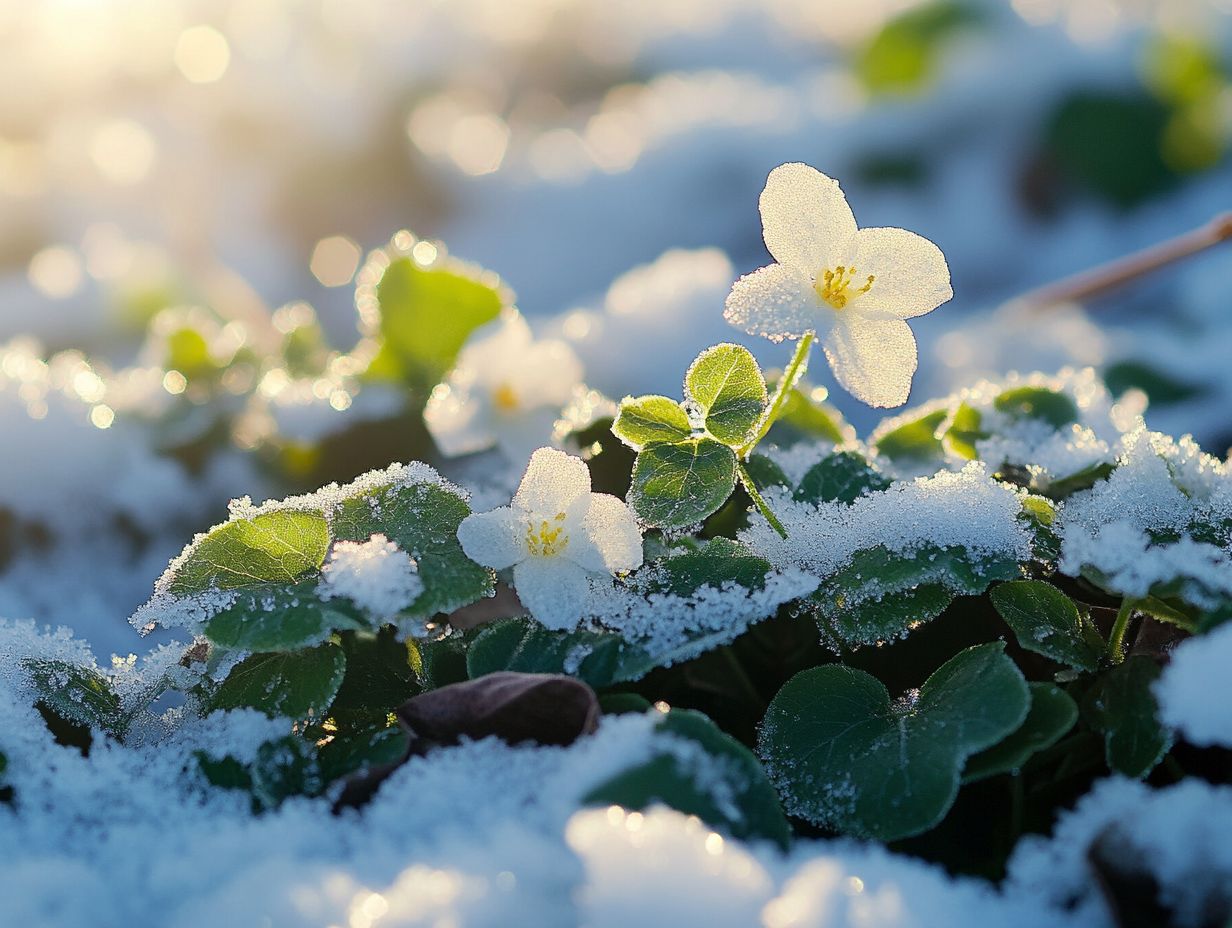
The soil and nutrient needs of cold plants are essential for their growth. These elements directly influence their health and yield, especially when following organic gardening practices. Embracing organic gardening significantly enhances soil quality, providing the essential nutrients that help cold plants thrive during the cooler months when harvesting fresh vegetables is key.
To create optimal conditions, focus on well-draining soils, a mix of sand, silt, and clay that drains well, enriched with organic matter. This is vital for crops like lettuce and turnips. Cold plants like kale and spinach flourish in soils rich in nitrogen, phosphorus, and potassium nutrients you can easily supply through compost, well-rotted manure, and cover crops like clover.
Incorporating cover crops such as clover or vetch during the off-seasons improves soil structure and contributes vital nutrients when tilled back into the earth. Using mulch effectively retains moisture and regulates soil temperature, creating a favorable environment for these hardy plants to grow and prosper, especially in cold-weather gardening.
Start your gardening journey today to reap the benefits of winter crops!
Common Cold Plants and Their Growth Habits
Common cold-hardy plants like spinach, kale, Swiss chard, bok choy, and collards showcase distinct growth habits that align perfectly with cooler climates. They are staples for your garden.
These resilient crops possess adaptations that enable them to thrive in low temperatures, delivering a generous harvest of fresh, vibrant produce ideal for adding variety to your meals.
Examples and Characteristics
- Carrots – develop a delightful sweetness and can handle light snow.
- Turnips – offer a robust texture that thrives in winter soils.
- Radishes – known for their rapid growth and can quickly establish themselves even in colder months.
These plants not only endure but also flourish in colder temperatures, with flavors that can actually intensify after exposure to frost, providing delightful additions to your winter meals. By understanding their traits, you can select the best varieties tailored to your needs and growing conditions.
To cultivate these cold-loving crops successfully, prepare the soil effectively and pay attention to planting timing, especially concerning the last frost date. Row covers shield your plants from harsh winds, while mulching helps retain soil warmth and moisture. This prepares you for a bountiful harvest throughout the winter season, allowing you to enjoy flavorful vegetables all winter long.
In conclusion, understanding the requirements and characteristics of cold plants is essential for successful winter gardening. With proper care and the right techniques, you can enjoy fresh produce even in the coldest months.
Strategies for Growing Cold Plants
Implementing effective strategies for nurturing cold plants can significantly elevate both yield and quality. This is especially true in winter gardening, where the right techniques can make all the difference. By utilizing structures such as high tunnels and hoop houses, you can offer essential protection from harsh elements. This ensures your plants thrive even in the coldest conditions.
Coupled with specific planting tips, you’ll ensure that your cold plants not only survive but truly thrive. This means making your winter gardening efforts successful, even in challenging conditions.
Tips for Optimal Growth

To achieve optimal growth for your cold-weather plants, applying mulch can be a very helpful method. Mulch maintains soil temperature and moisture, supporting healthy development and enhancing the growth of your vegetables. Understanding the right timings for planting and harvesting can significantly maximize your yield in cold-weather gardening.
When you cover the ground with mulch, you prevent weeds and maintain consistent moisture levels. This is crucial during unpredictable temperature fluctuations that can affect your plants. Consider using organic materials like straw, wood chips, or shredded leaves. These not only provide insulation but also enrich the soil as they decompose, enhancing your organic gardening efforts.
Timing is essential for successful gardening. Planting should align with the last frost date, which is the date when you can expect no more frost. This helps you know when to plant your seeds. Harvesting should be strategically planned to ensure your plants reach peak ripeness before colder weather sets in. By combining effective mulching techniques with precise timing strategies, you can cultivate a thriving environment that promotes robust growth and a bountiful harvest of vegetables throughout the winter.
Challenges and Solutions for Cold Plant Growth
Cultivating cold-hardy plants presents unique challenges, notably the threats posed by frost and various environmental factors that can impede growth. However, you can easily overcome these challenges by trying smart solutions such as cold frames and other protective strategies. This significantly enhances your winter gardening experience, ensuring a thriving garden even in the chill of the season and maximizing your harvest of fresh produce.
Dealing with Frost and Other Obstacles
Dealing with frost and various obstacles is crucial for the successful growth of your cold-sensitive plants. Especially when utilizing protective structures, methods like using cloches, Wall O Water, and PVC pipe structures offer the protection your plants need. These create a mini greenhouse effect that keeps them warm.
For instance, cloches trap heat and moisture especially beneficial during unexpectedly chilly nights when your plants need extra protection. Wall O Water, which uses tubes filled with water, helps keep plants warm by storing heat from the sun and releasing it at night, ensuring your plants thrive through cold spells.
Well-designed PVC pipe structures can be easily covered with plastic sheeting, forming a quick and efficient cold frame. Many gardeners have reported remarkable success using these protective methods. Some even managed to extend their growing season by several weeks, leading to healthier and more resilient crops.
Frequently Asked Questions
What are cold plants?

Cold plants are those that can survive and grow well in cold climates. Examples include kale, spinach, and certain types of cabbage.
What are some examples of cold plants?
Cold plants include coniferous trees like pine and spruce. They also feature cold-weather vegetables such as kale, Swiss chard, carrots, potatoes, lettuce, beets, and radish.
What are the growth habits of cold plants?
Cold plants grow slower than those in warmer climates. They usually have smaller leaves and shorter growing seasons.
How do cold plants adapt to survive in colder climates?
Cold plants survive by producing natural chemicals that stop water from freezing. They also have compact leaf structures that help conserve energy.
Why is it important to understand the growth habits of cold plants?
Knowing how cold-weather plants grow is crucial for successful gardening! It helps gardeners and farmers choose the best plants for their regions and care for them properly.
What are some tips for growing cold plants successfully?
Choose varieties suited for colder climates. Protect them from harsh weather and provide the right amount of fertilizer and water.


